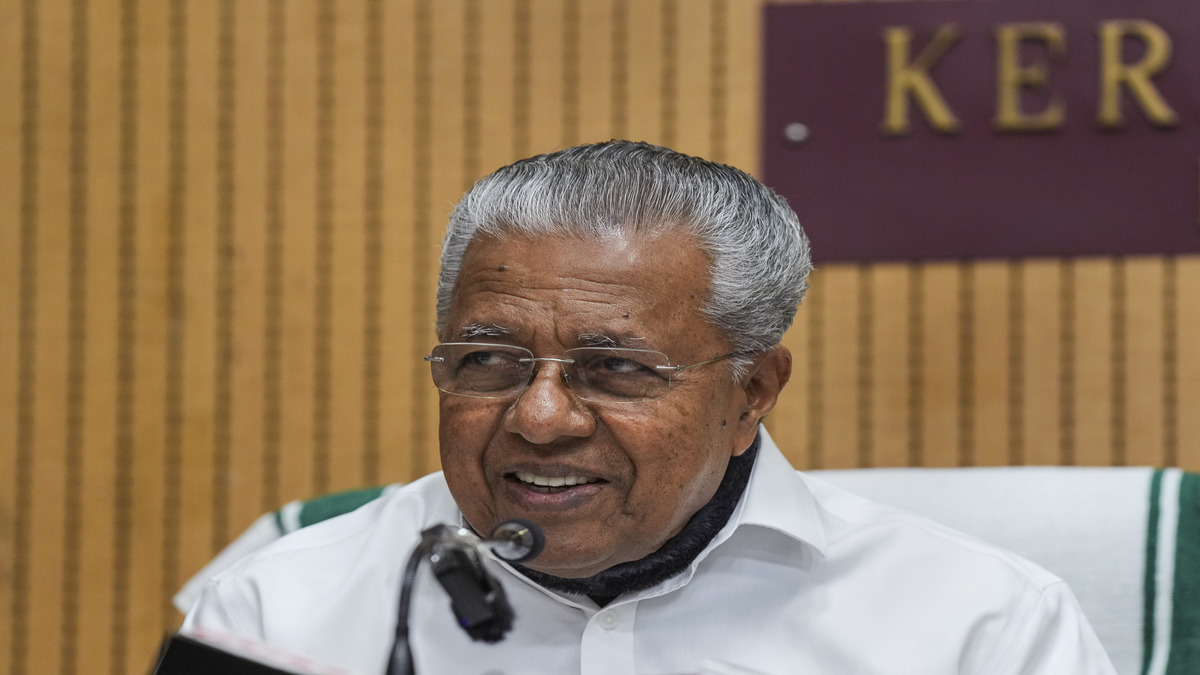Kerala chief minister Pinarayi Vijayan created buzz with his remarks at a rally against the Citizenship Amendment Act (CAA) on Monday (25 March). Addressing the gathering, the veteran politician asked whether the Sangh Parivar would abandon the slogan ‘Bharat Mata Ki Jai’ as a Muslim coined it.
“It was Azimullah Khan, a Muslim, who first raised the slogan Bharat Mata Ki Jai. The Sangh Parivar followers are not aware of that. Will they be ready to renounce that slogan because it was made by a Muslim?” The Hindu quoted Vijayan as saying.
The Kerala CM added that he does not know whether the Sangh Parivar would stop using the slogan now. He also said at the rally organised by his party CPI(M) that the slogan ‘Jai Hind’ was first used by an old diplomat named Abid Hasan, reported PTI.
Who was Azimullah Khan? Did he coin ‘Bharat Mata Ki’?
Let’s take a closer look.
Azimullah Khan
Born in Uttar Pradesh, Azimullah Khan was a strategist in the Revolt of 1857, or the First War of Independence.
As per an article on the Amar Chitra Katha website, Azimullah Khan grew up in Kanpur (then known as Cawnpore) after being rescued by British missionaries, along with his mother, during the famine of 1837-38.
He knew both English and French. Khan was appointed as a secretary to British officers after he completed his education, as per the article.
He went on to work for Marathi leader Nana Saheb Peshwa as his secretary and advisor.
Impact Shorts
More ShortsAfter the death of Baji Rao II, the last Maratha Peshwa (ruler), the British refused to extend his pension to his adoptive son, Nana Saheb. Following this, Nana chose Azimullah Khan to lead a team that would go to England and represent his case to higher authorities, according to the Amar Chitra Katha article.
Khan spent a couple of years in England and observed British politics during his stay, as per a report in The Siasat Daily newspaper.
He failed to convince the government to resume Nana Saheb’s pensions. Khan felt disappointed and vexed with the system and British rule, as per the Amar Chitra Katha article.
During his return journey to India, he came across the defeat of Anglo-French troops by the Russian soldiers in Malta. He then visited Constantinople to witness the military capabilities of Russia, reported The Siasat Daily.
His journey also included stops in France and Crimea where he observed the politics and war strategies of the rulers of these regions, the newspaper report added.
These trips made him realise that the British were not invincible and inspired him to fight for the freedom of his land.
Azimullah Khan’s role in the 1857 revolt
Once Khan returned home, he apprised Nana Saheb about the dangers of British rule, as per the Amar Chitra Katha article.
Khan reportedly wrote letters to the native rulers of the countries willing to back the revolt against the British. Khan, who had brought a French printing press from his trip, started a newspaper called Payaam-e-Azadi in Hindi and Urdu to shape public opinion against British rule, reported The Siasat Daily.
Nana Saheb, who resented the British over the rejection of his claim, finally decided to join the mutiny of sepoys. He led the rebellion in Kanpur in June 1857 .
“When the revolt broke out, Nana Saheb initially sided with the British, offering assistance to General (Hugh) Wheeler, the commanding officer of the Kanpur garrison. However, when General Wheeler, along with his soldiers and their families, was escaping by boat from the Sati Chaura Ghat in Kanpur for Allahabad, Nana Saheb’s men attacked them, killing almost all the British men, women and children,” journalist Atul Sethi wrote, as per Frontline.
The British retaliated by targeting Nana’s stronghold in Bithoor. In 1859, he fled to Nepal where he is believed to have spent his last years.
Azimullah Khan Yusufzai (1830-1859), also known as Dewan Azimullah Khan, was initially appointed Secretary, and later Prime Minister to Nana Sahib. He is also known as the Krantidoot Azimullah Khan.
— Rana Safvi رعنا राना (@iamrana) March 9, 2020
Played an important role in 1857 Uprising.
At Jhansi Museum pic.twitter.com/eCy1JjRtAY
As per The Siasat Daily, Khan, who was one of Nana’s closest aides, also managed to escape with the Maratha leader to the forests of Nepal.
Khan, who came to be known as Krantidoot or Ambassador of Revolution, reportedly died in October 1859.
Azimullah Khan’s link to Bharat Mata Ki Jai
Khan is believed to have first used the slogan ‘Madar-e-watan, Bharat ki Jai’ – a call for the motherland – in 1857, reported The Hindu.
His role in the First War of Independence will remain significant. With the Kerala CM’s remarks, Khan has been brought to the spotlight.
With inputs from agencies


)

)
)
)
)
)
)
)
)



